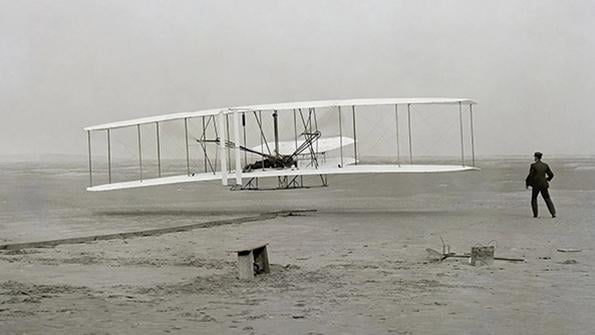
Dec. 17 in the US is Wright Brothers Day, which commemorates the first successful flights on that day in 1903 of a mechanically propelled airplane that was heavier-than-air and was designed and flown by Wilbur and Orville.
From those precarious, fragile but ultimately exhilarating flights from a desolate North Carolina beach, a global air transport system grew that even the incredible engineering discipline and vision of Orville, Wilbur and their sister Katherine, who was critically involved and supportive of her brothers’ work, surely could not have imagined.
But it is not hard to believe that if the Wright siblings were standing today at one of the many global hubs packed with thousands of people about to fly for business, leisure or just to connect with friends and family, they would be extraordinarily moved by their achievement. If they stepped outside and watched airliner after airliner taking off and landing, transporting people, goods and medicines routinely and safety to wherever they want or need to go, they would be amazed at the extent to which their endeavors changed the lives not just of the great and wealthy, but for everyday people everywhere.
The technological feats of space travel are, of course, awe-inspiring. But even they were outcomes of those pioneering days of manned flight. And today’s space programs remain a (very) rich man’s game with unclear motives.
Not so commercial air transport, which, adjusted for inflation, is cheaper and more accessible than ever. Low-cost carriers are firmly established and growing on every continent; in some places, like Mexico, they have become the air travel mainstay—offering affordable, safe travel to people who previously could only endure long, uncomfortable and unsafe bus journeys.
Why is this so important to acknowledge and understand now, as we enter another year ever-more distant from that Wright Flyer first flight more than a century ago? Because commercial air transport matters. Hugely. It generates jobs and wealth—ask any small town that’s struggling to maintain an airport and an economy. It connects people rather than alienating them. It gets aid, medicines and supplies to those caught in manmade or natural crises. It frees people to pursue education, ambition and curiosity.
There are those who would insist that the only sustainable air travel is no air travel. They are wrong, and they would inflict a terrible cost on humankind.
There are near- and long-term solutions to preserving, even growing, the global air transport system and making it more sustainable. They involve huge investments, collaboration and—most of all—political vision. The US is now leading the sustainable aviation endeavor, with President Joe Biden stating in December that his administration was “committed to preserving and investing” the legacy of modern air travel, in part through tax incentives to rapidly grow the availability of SAF feedstocks and to encourage investments in SAF production.
Sustainable aviation is the 21st century challenge equivalent of what the Wright siblings faced. The Wright—and the right—way forward is to step up to the challenge.






Comments